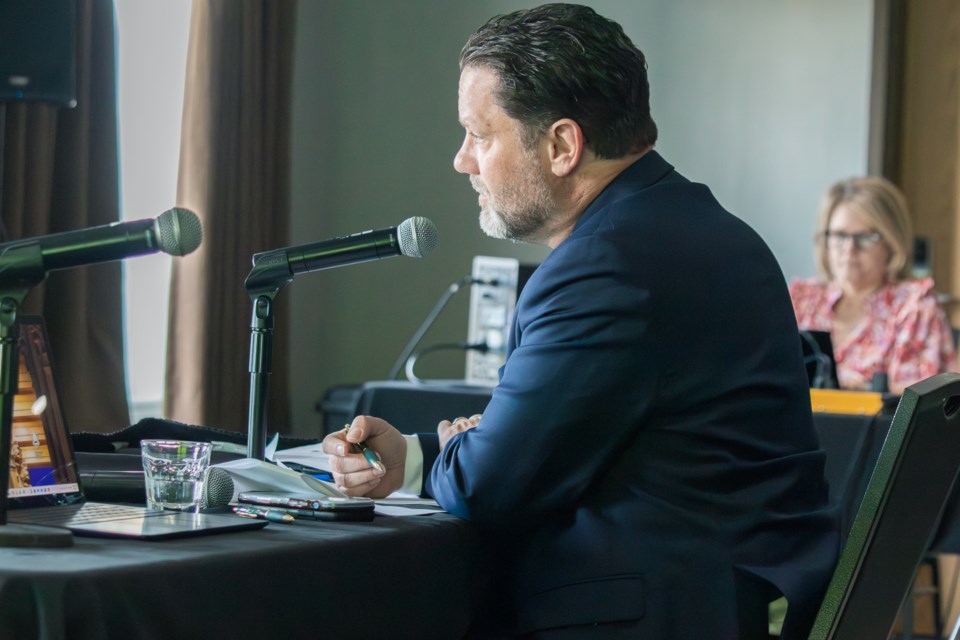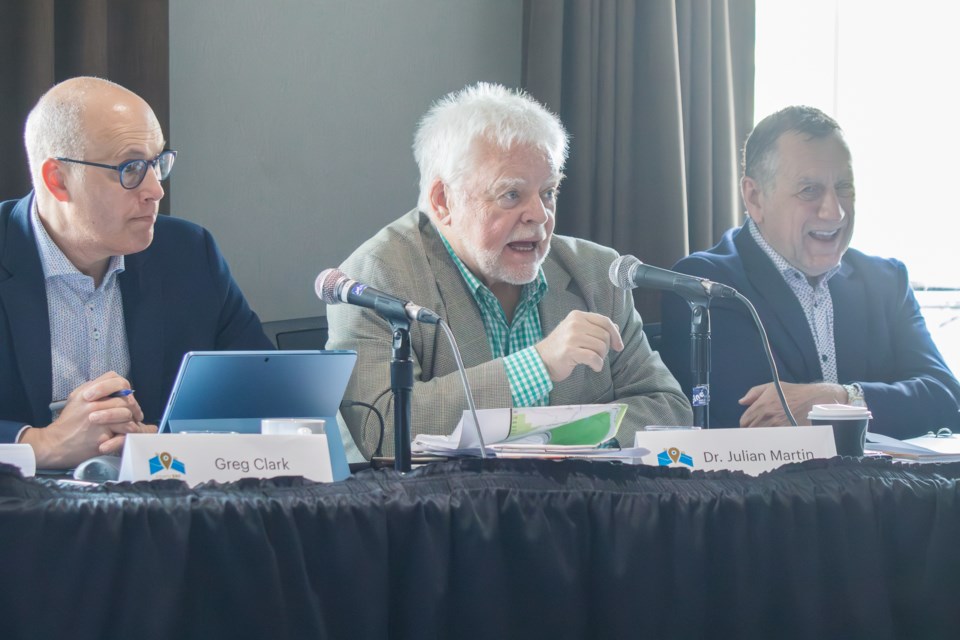LAKELAND – The Bonnyville-Cold Lake-St. Paul electoral district being physically too large for a single MLA to represent everyone properly, was among the concerns raised during the Electoral Boundaries Commission (EBC) public meeting held in St. Paul, June 5.
The public meeting is part of the public engagement process being conducted by the EBC to review provincial constituency boundaries ahead of the next provincial election. Electoral boundary reviews happen every eight or nine years.
Bonnyville-Cold Lake-St. Paul MLA Scott Cyr and MD of Bonnyville Coun. Josh Crick were the only ones present during the Thursday morning meeting.
While Cyr and Crick presented separately before the Commission, both had similar concerns and proposals, primarily speaking in favour of redrawing the Bonnyville-Cold Lake-St. Paul electoral district to allow for a more effective representation of constituents.
Too big
Crick believes the geographical size of the Bonnyville-Cold Lake-St. Paul electoral district somewhat limits the amount of work MLA Cyr can do when engaging when constituents.
He said the MD of Bonnyville alone has an area of around 13,000 square kilometers, when compared to cities like Edmonton with around 9,000 square kilometers.
“MLA Cyr does a great job, but [Lakeland] is such a big area,” said Crick. “We have so many different . . . councils for MLA Cyr to work with,” he added. This ranges from towns to counties, villages, First Nations, and Métis settlements. “Not to mention five school boards and the hospitals.”
Cities like Edmonton have about “20 MLAs,” which is more than the number of city councilors, said Crick.
Too many people for one MLA
Another concern raised during the meeting was population.
During Cyr’s presentation, he said the Bonnyville-Cold Lake-St. Paul area technically has far more people than allowed by law.
Based on Statistics Canada’s 2021 census numbers, excluding individuals living off-reserves, the population of the constituency is around 62,000 people, said Cyr.

That number is much higher than the legal threshold of about 58,000 people per electoral district, he said.
The legal limit for a constituency is derived from the average population for each electoral district in the province, as per the Electoral Boundaries Commission Act. In 2023, the average was 49,000, according to numbers from the Government of Alberta.
The Act does allow for 25 per cent variance above or below the average. This would be roughly 35,000 minimum residents or 58,000 maximum residents for every constituency.
In the Bonnyville-Cold Lake-St. Paul constituency, Cyr said if people living off-reserve and those who have moved to the area recently are included, the actual number is likely between 66,000 to 68,000.
This makes it hard for him to serve everyone properly, he said.
“I love all of my constituency. I'm not suggesting that I want to lose any of them because I have become attached to every community here,” added Cyr, which he said makes it even more important for him to ask, “Is this MLA able to represent us all?”
The population and geographical challenges of the Lakeland in a constituency context are also related. “It’s like having a city that’s spread out,” he noted.
Cyr estimated the population of his constituency would also be closer to 75,000 people if the "shadow population" was included.
‘Shadow population’
Cyr said the shadow population is another unique issue in the constituency. The shadow population is primarily comprised of temporary workers who use local services like roads, healthcare, policing, but do not pay taxes or live in the area permanently.
He said this puts a big strain on the constituency and its services, even though these workers aren't fully counted in the federal census.
Proposal
Cyr proposed the Commission reintegrate the northwest portion of the County of St. Paul, as well as Saddle Lake Cree Nation, to the Athabasca-Barrhead-Westlock electoral district, which would allow the constituency to meet the legal threshold.
He said the change would reduce the constituency population by 6,691.
He also proposed reintegrating smaller communities like Mallaig, Ashmont, McRae, Boyne Lake, St. Vincent, Abilene, and Owlseye back into the Bonnyville-Cold Lake-St. Paul electoral district.
“The proposed boundaries would align electoral districts with municipal boundaries, eliminating confusion among residents. In the last election, residents in the northwestern portion of the County of St. Paul were unsure which constituency they belonged to,” said Cyr.
“With resolving confusion that arose among voters during the last election, I take no pleasure in recommending the removal of any part of my constituency. It is tough to come up with some balance here, particularly Saddle Lake, whose residents I deeply value. However, every Albertan deserves fair and effective representation,” he added.
During the meeting, Cyr said the Lakeland region also expects to see more growth, which he suggested must be considered as the EBC reviews boundaries.
Projects such as the federal government's new F-35 fighter jet program at 4 Wing Cold Lake; the Pathways Alliance’s carbon capture and storage project, which is gaining some federal interest; and other oil and gas expansions were noted as reasons for growth.
“All these factors contribute to steady in-migration from across Alberta and Canada, adding to the resident and shadow population alike,” said Cyr. “The long-term economic outlook for Bonnyville-Cold Lake-St. Paul is therefore one of sustained growth, not contraction.”
He added, “This contradicts any assumption that the region is rural and stagnant . . . On the contrary, it is rural and thriving.”
Commission member Dr. Julian Martin said he would consider Cyr’s proposal due to actual predictable growth in the region. He is particularly confident that the F35 project will move forward.
“It's most persuasive for us if [developments are] imminent and tangible, and I think you persuaded me . . . with the projects spoken of,” said Martin.
Commission member Greg Clark asked if Cyr believes it would be helpful to have a larger budget to allow him to open more satellite offices or hire more staff to serve his constituency better.
Cyr said he is stretched to the max with his annual budget. “But, the answer here is that you can’t hand us 50,000 to 60,000 people to manage in such a large geographic area and not give us the ability to be able to address that.”



